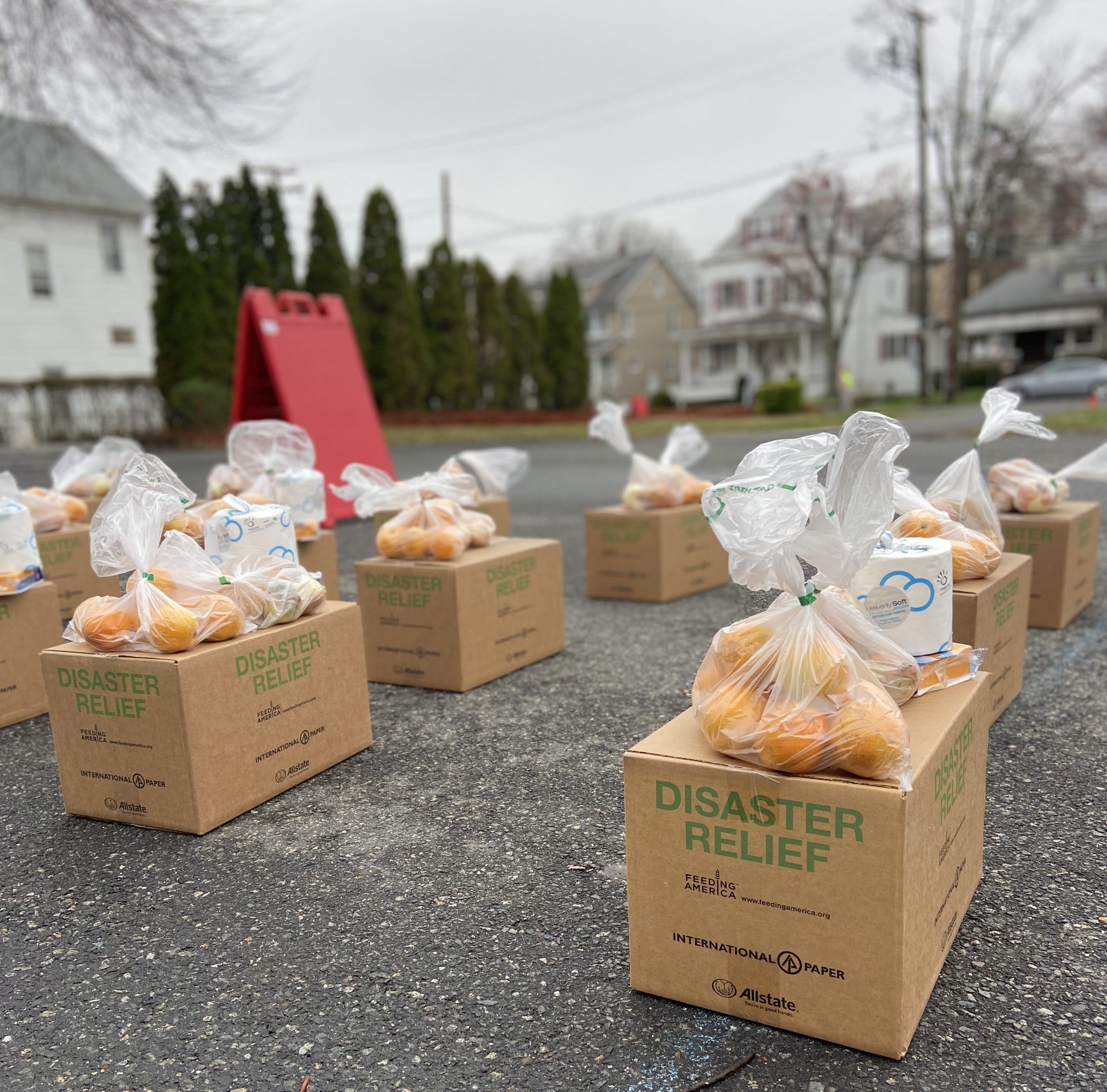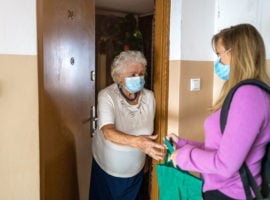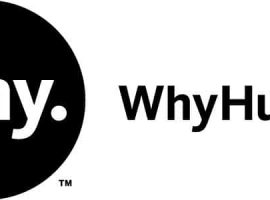There are now more confirmed Coronavirus cases in the U.S. than in any other country. As the severity of the crisis escalates, empty grocery store shelves and panicked shoppers are becoming an all too common scene. Yet as people stockpile food and supplies, more and more people in the U.S. are finding it increasingly difficult to access food at all.
Before the COVID-19 crisis, there were already 37.2 million food insecure people living in the U.S. For many of those struggling to make ends meet, government food programs, like SNAP, are either unavailable or insufficient, so they must rely on emergency food organizations like food pantries and soup kitchens. Compounding factors triggered by the Covid-19 Crisis – increased demand, shortage of volunteers, reduced hours and difficulties in distribution – are now pushing emergency food providers to their limits.
With millions left unemployed due to the closure of restaurants and other services classified as “non-essential” during this crisis, food insecurity is likely to spike unless drastic measures are taken. Year-round, the WhyHunger Hotline, Texting and Find Food Database help connect people in need access local, nutritious food through their community food pantries and soup kitchens. Within the last few weeks, calls to the hotline have increased dramatically. Callers describe not being able to afford food due to recent unemployment or not being able to leave the house as they are elderly or have an underlying condition. Many are desperate, many are sobbing and all are unsure where to turn for help.
Food providers are struggling to keep up with the soar in demand. Elijah’s Promise, a Community Kitchen in New Brunswick, NJ has reported that they now serve about 250 meals a day compared to the usual 150 and anticipate that it could rise to over 400. Ken Flemmer the Executive Director at Adventist Community Services in Maryland reported a “50% increase in families seeking pantry assistance.” He is predicting the need will only grow.
Yet while the Covid-19 crisis is causing increased demand for emergency food, it is also making it more difficult for food providers to operate. One of the major issues food providers face is a loss of volunteers. Amanda Nickey, the CEO of Mother Hubbard’s Cupboard in Bloomington, Indiana explains, “We have lost 75% of our volunteers, as the local university shut down and older volunteers are staying home for their own safety.” Kathy Kelly-Long, the Food Pantry Director at Broad Street Food Pantry tells us that most of their volunteers are over 60, and no longer feel comfortable volunteering due to the health risks. While food pantries have taken measures like increased sanitation, many clients and volunteers still find it too risky. In addition to a loss in volunteers, food providers have also been receiving fewer food donations.
As emergency food providers struggle to even maintain their pre-Covid-19 capacities let alone accommodate the increase in demand, they also face the challenge of having to alter their distribution methods. “We normally operate a patron-choice food pantry that is set up like a grocery store. We’ve switched to distributing pre-packed boxes of food, fresh and nonperishable, outside of our building on our deck”, explains Amanda. Yet many of the people they serve, like the elderly and those with underlying medical conditions, cannot risk leaving the house at all. For those people, there are currently not sufficient emergency food delivery services available.
Many food providers have had to suspend all other programs not related to emergency food, including educational initiatives, social justice programs and work with farms and gardens. Major fundraising events have been cancelled or postponed. Several partners have shared with WhyHunger that they expect to run out of food in the next two weeks unless something changes. Some food banks and pantries have been forced to close and others are deeply worried about the health and safety of their staff, the remaining volunteers and the people they serve. Almost one-third of the pantries in NYC’s five boroughs have shut down in the last week.
Even with all the obstacles, many food providers are finding ways to innovate. From drive-through food pick up to rotating small teams of staff and volunteers, to teaming up with local farmers markets for food access and distribution, these front-line agencies are doing the best they can to keep meeting their communities’ growing needs. Bronx Green Up, for example, has been able to continue their educational work by moving their gardening classes online and having students collaborate on a project to help their community during this time. They are also educating people on how to sprout seeds and grow food from within their home.
Our most vulnerable communities – the elderly, the unemployed, the homeless, the disabled, those with underlying medical conditions and those struggling with hunger and poverty are those most impacted by the Covid-19 crisis. With our emergency food system pushed to its limits, the true extent of the problem is coming to light. As increasing unemployment leads to increasing food insecurity, it is left to emergency food organizations and the volunteers working on the front lines to keep people fed. In order to address the problem effectively we need to consider the underlying causes of why people are food insecure and how this can be addressed at a policy level. Emergency Food Providers argue that implementing policy changes that ensure a living wage and unemployment benefits, expand SNAP, and support essential-service workers, for example, would greatly mitigate the impact of the Covid-19 crisis on food security and change the picture of hunger in the U.S. beyond this crisis.
“I think this crisis magnifies what is so flawed about our response to hunger in this country. As a nation we take for granted that food pantries, soup kitchens, and food banks are just a part of life. We rely on emergency food providers to meet a basic everyday need and think this is perfectly acceptable and when a crisis happens, we’re asked to do even more and potentially put ourselves at risk of exposure and illness,” Amanda Nickey, Mother Hubbards’ Cupboard CEO told the Washington Post.
Help us to support food pantries, farmers, and food-industry workers with the critical support they need during this time by donating to the WhyHunger Covid-19 Rapid Response Fund. If you or someone you know is in need of food, contact the WhyHunger Find Food Database, Text your zip code to 1-800-548-6479 or call 1-800-5HUNGRY to get help accessing emergency food providers near you.






